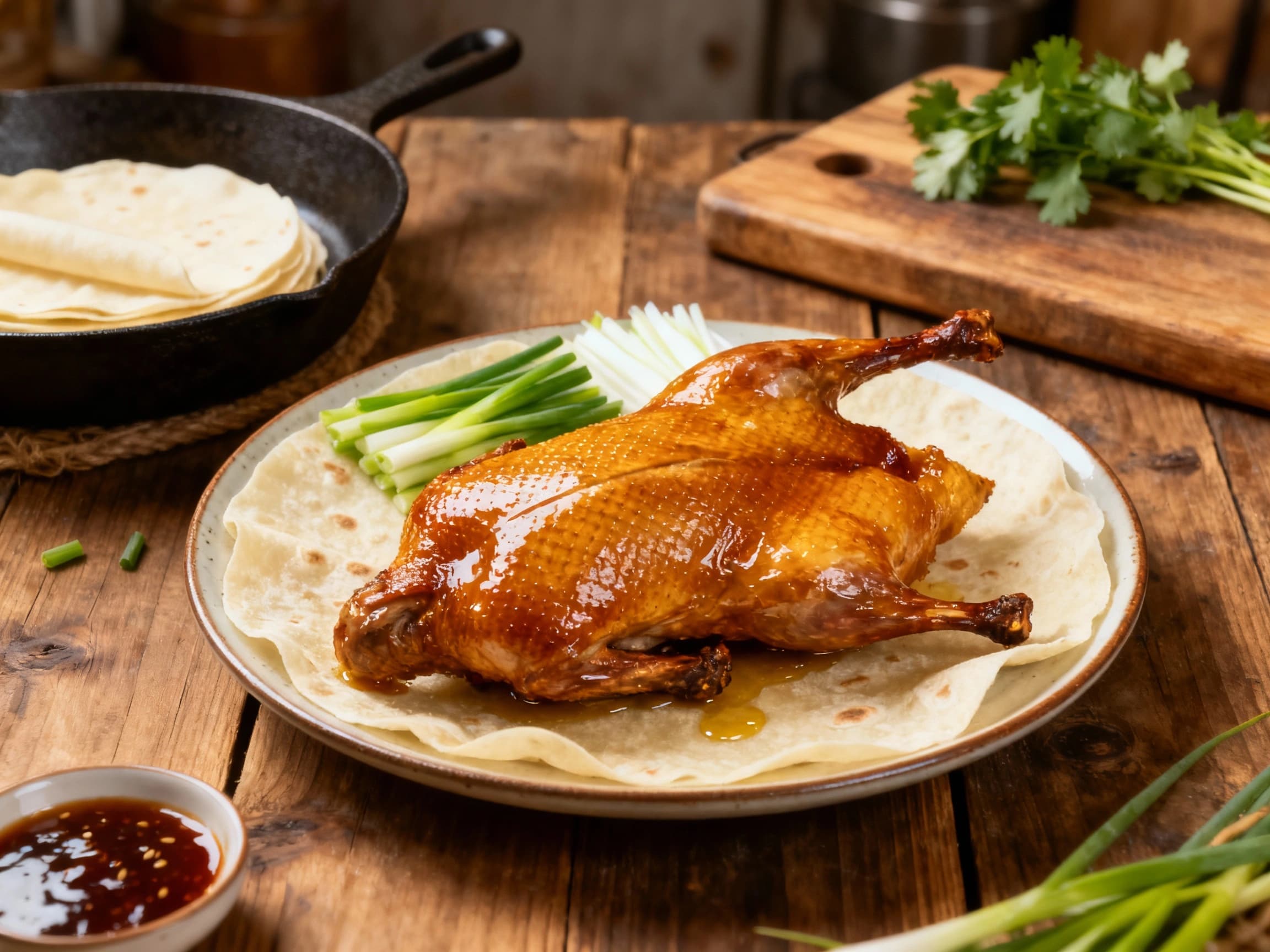
Peking Duck
北京烤鸭
- Country
- China
- Region
- Beijing
- Recipes
- 3 Recipes
Dish information
Peking Duck (北京烤鸭), or Beijing Kaoya, is one of China's most celebrated national dishes, originating from Beijing. Its history is long and rich, tracing its roots back to the imperial era, with early forms of roasted duck being a staple in Chinese royal courts as far back as the Yuan Dynasty (1271–1368). Over centuries, particularly during the Ming and Qing dynasties, the preparation methods evolved, leading to the development of the thin, crispy-skinned version we know today, characterized by its unique roasting techniques. The most famous style, developed in Beijing, involves air-drying the duck, coating it with a maltose syrup, and then roasting it in a special oven. This process results in intensely flavorful, succulent meat and a distinctively thin, crackly, mahogany-colored skin that is the dish's hallmark. The dish gained significant prominence in the early 20th century, with restaurants like Bianyifang and Quanjude becoming legendary institutions dedicated to its perfection. It's traditionally served with thin, steamed pancakes (chunbing), sweet bean sauce (tianmianjiang) or hoisin sauce, thinly sliced cucumbers, and scallions, allowing diners to assemble their own delicate wraps. Peking Duck is not just a meal but an experience, symbolizing culinary refinement and a connection to China's rich imperial past.
Timeline
Early forms of roasted duck were served in Yuan Dynasty imperial courts.
The dish evolves, with techniques for preparing and roasting ducks becoming more refined.
Roasted duck consumption becomes more widespread among the elite during the Ming Dynasty.
The 'Gua ZI' (挂炉) roasting method, using hanging stoves, becomes prominent.
Restaurants like Bianyifang and Quanjude establish the modern Peking Duck style.
Peking Duck gains immense international popularity, becoming a symbol of Chinese cuisine.


